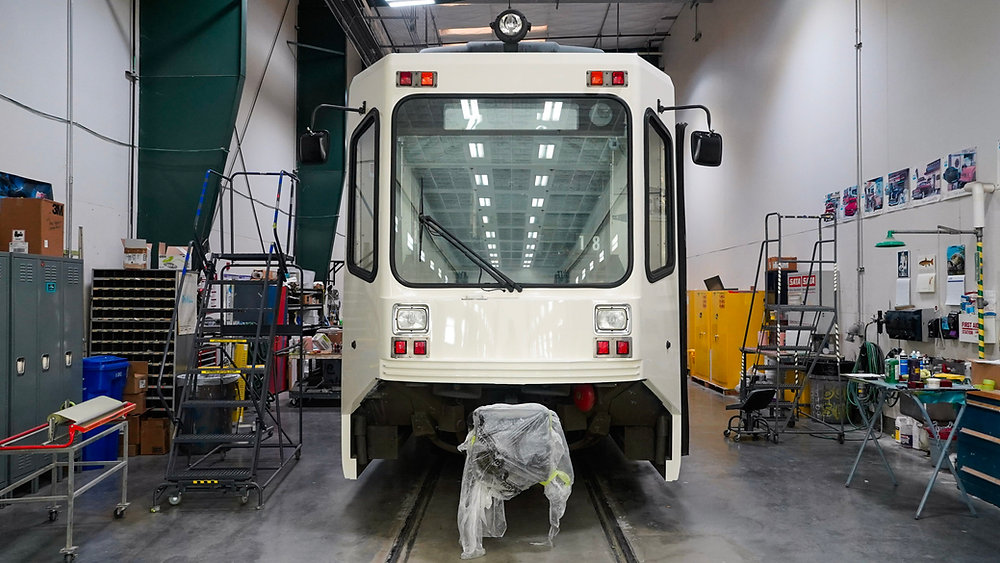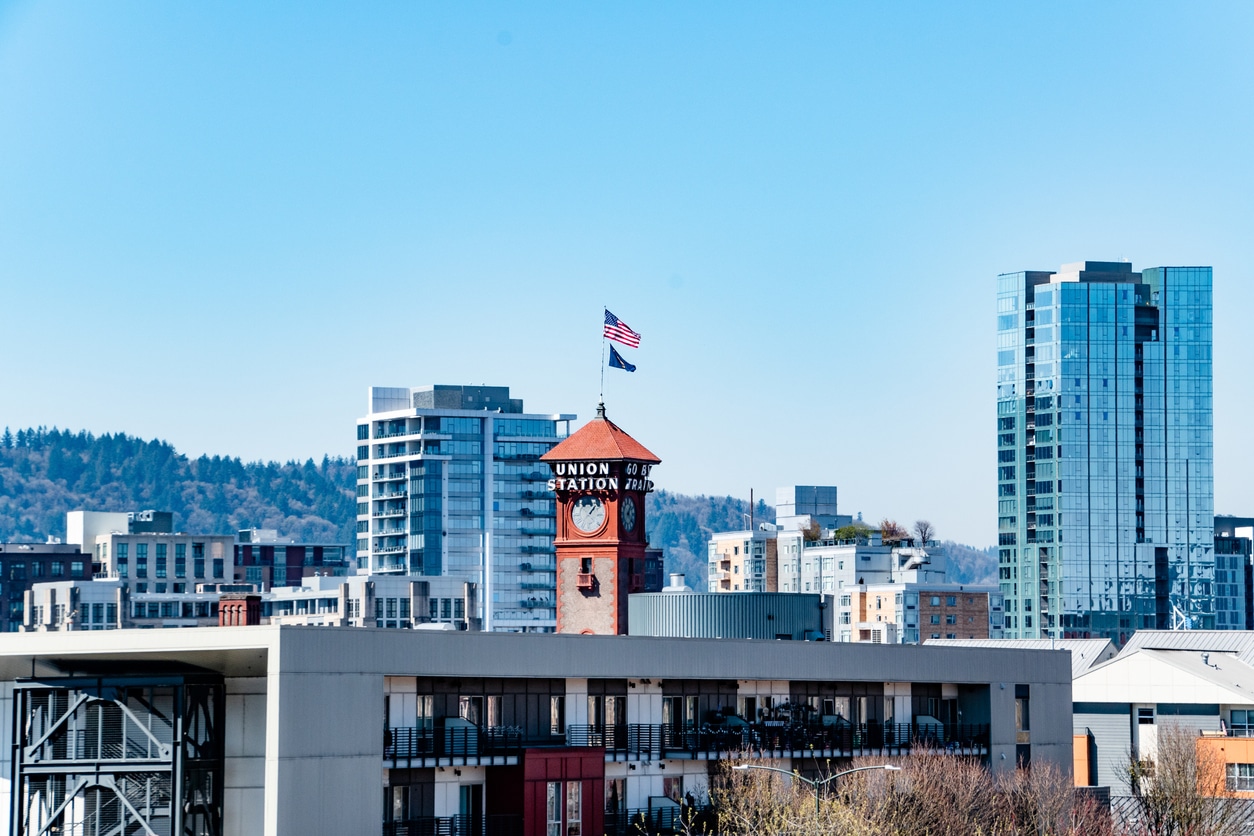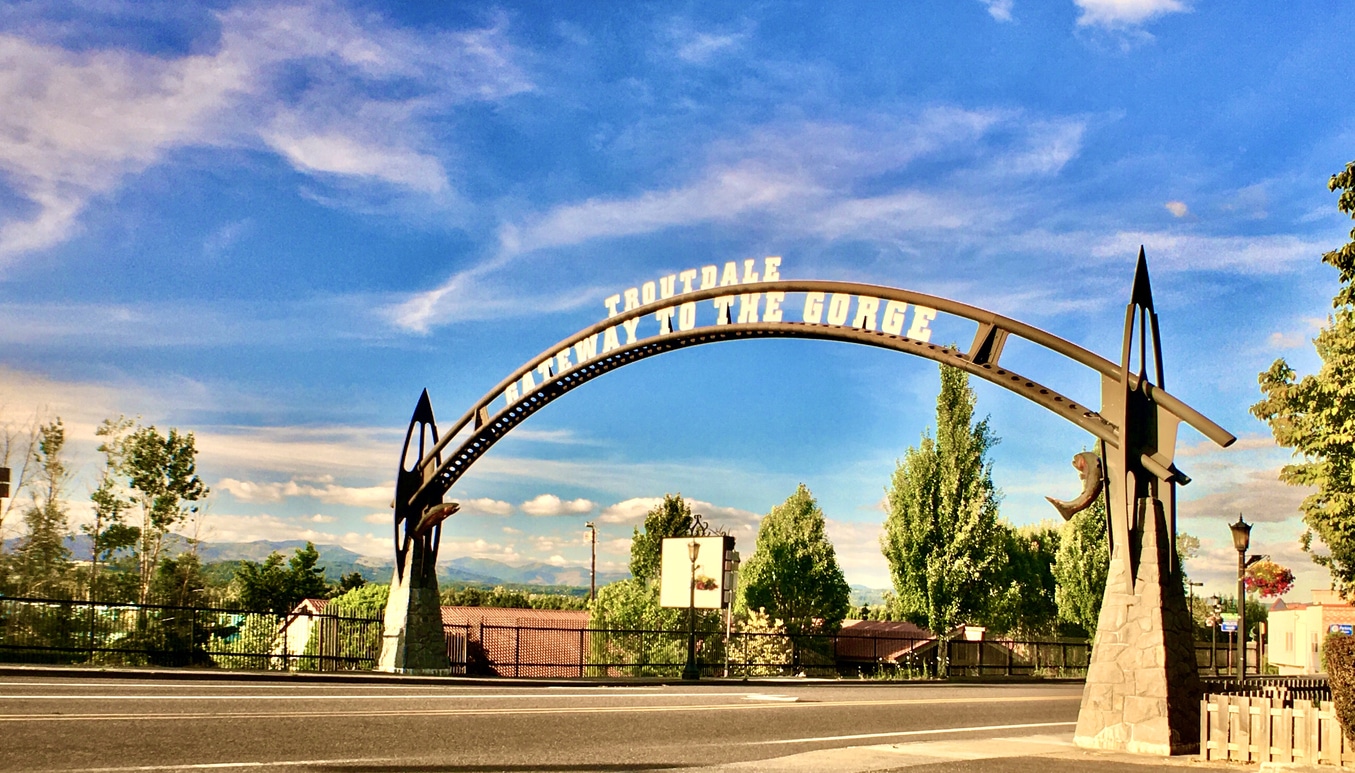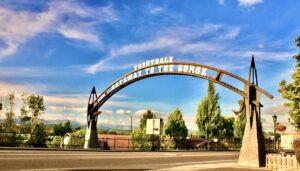TriMet’s First MAX Train Preserved at Oregon Museum
Oldest MAX train nears retirement
After more than 38 years of service and 2.2 million miles traveled, one of TriMet’s oldest MAX trains neared its next stop – retirement.
TriMet donated Type 1 vehicle “101” to the Oregon Electric Railway Museum, preserving the first MAX train car ever manufactured. The vehicle joined the museum’s vast collection of electric trolleys and streetcars, but with a twist that delighted TriMet diehards and rail fans across the state.
In recognition of the donation and the vehicle’s legacy, TriMet bid farewell to MAX car 101 at the Ruby Junction Rail Operating Facility on Tuesday, July 8. The car was transported to the museum later that month, ensuring the MAX car remained in the Willamette Valley for in-person experiences. The museum, located in Brooks, Ore., is about 38 miles south of Portland via Interstate 5.
The donation also came with a special goal: to keep the car running. That has been the long-term mission of the museum, which features a mile-long track running through its property. This ensured that a vital piece of Portland’s transit history continued to roll into the future.
The donation comes as we phase out our fleet of Type 1s and introduce the new Type 6s, our most technologically advanced MAX trains yet. If you’re interested in catching a Type 1 before they disappear, you’re in luck. A few trains will continue serving riders through the start of 2026.
If you’re unsure about which type of MAX train you’re boarding, just look for the number at the top of the train. Another rule of thumb – if there are stairs, it’s a Type 1. Because the stairs make the Type 1s inaccessible to some, they are always coupled with either a Type 2 or Type 3 MAX car that has low floors.
Most Type 1s are being sent to Radius Recycling, where they’re being turned into materials like rebar that will be used for local construction projects. Preserving at least one of the cars will keep a vital piece of the state’s rail transit history in the region for generations to come.
“This is a great opportunity to give back to the community and ensure the legacy and history of light rail is recognized,” TriMet’s Project Manager for Vehicle Engineering Joe Taylor said. “The Type 1s were designed and built in 1983 and went into service in 1986. They have been a fantastic workhorse for the agency, and we are excited to partner with the Oregon Electric Railway Museum to preserve one for future generations.”
The donation fulfills a longstanding goal that has been more than 30 years in the making, museum leadership said.
“This donation continues the story of Portland’s transit history at our museum for future generations to enjoy,” Oregon Electric Railway Heritage Society Secretary Mark Kavanagh said.
The Oregon Electric Railway Museum’s home is the 62-acre Powerland Heritage Park, a campus of 14 museums reflecting the preservation, restoration and operation of historic equipment. The museum has a collection of over 30 pieces, including streetcars, interurbans and electric freight locomotives, representing not just Portland but also other cities in the U.S., as well as Europe, Asia and Australia.
“As soon as the first Type 1 light rail vehicle started operation in 1986, we were making plans for the museum to acquire one upon retirement,” said Greg Bonn, the museum’s former director and son of its founder.
The museum plans to make modifications to its overhead trolley wire to allow the donated MAX car to operate. In the near term, the museum will display the vehicle near the museum’s trolley depot at Powerland Heritage Park during the Great Oregon Steam-up, scheduled for July 26-27 and August 2-3.
After Steam-up, it will be moved to the museum’s vehicle barn for occasional tours, where it will join two original 1904 Council Crest Portland Streetcars and the last streetcar purchased by the Portland Traction Company in 1932.
The museum is open on Saturdays in the summer months, along with special events with trolley rides. The Oregon Electric Railway Historical Society, an all-volunteer 501(c)3 non-profit corporation, also operates the Willamette Shore Trolley between Lake Oswego and Portland.
Share this content:














Post Comment